It’s cool in this forest, but the humidity is making me sweat like a Pig. [Except Pigs don’t really sweat! – Ed.]
The field scientists we’re with are busy attaching a motion-activated trail camera to a tree. Around the size of a computer speaker, the camouflaged contraption has one job – to snap still images and video segments of whatever crosses its path to trigger its built-in motion sensors.
“There are tracks in the mud. The [P]igs must have passed here,” notes biologist Jay Fidelino from the University of the Philippines Institute of Biology (UP-IB). The area’s wild Pigs have eluded us all week, despite long hours spent in the bush.
PARALLEL EXISTENCE
In the forested mountains of Leyte lies the largest renewable energy facility in the Philippines, the Tongonan Geothermal Project. At 107,600 hectares, the area is roughly the size of Rizal province and provides nearly 40% of the country’s geothermal capacity. It’s managed and protected by the Energy Development Corporation, the country’s top renewable energy provider.
As responsible geothermal operations are compatible with healthy forests, the area is still well-vegetated. We passed through towering stands of Lawaan, Dau, Katmon Bayani and other endemic trees.
The Tongonan facility is home to Birds, Monkeys and wild Pigs, who are among the hardest Philippine critters to see in the field. They’re the topic of this month’s entry for The Wild Side.
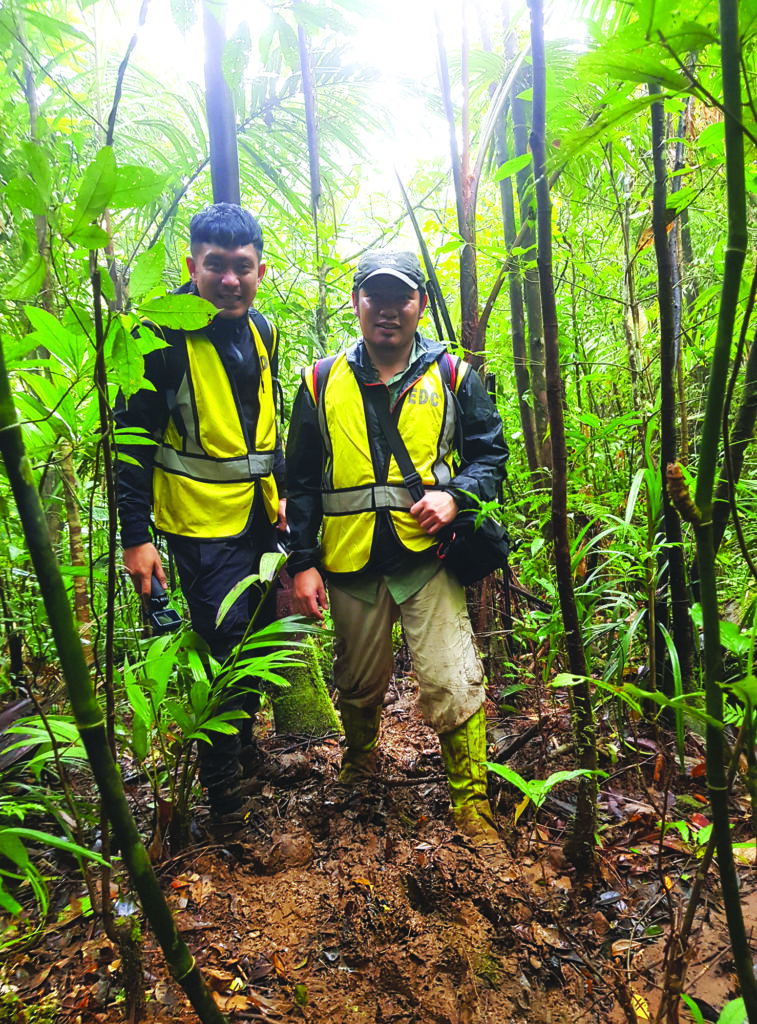
Documentarist Rhiyad Maturan and
The Wild Side’s Gregg Yan trudge
through ankle deep mud in Leyte’s
mountains in search of Philippine
Warty Pigs. Watch the mini-
documentary on EDC’s BINHI Facebook
Page soon. (EDC)
EXTINCTION LOOMS
Our country hosts five wild Pig species: the Philippine Warty Pig (Sus philippensis), Mindoro Warty Pig (S. oliveri), Palawan Bearded Pig (S. ahoenobarbus) and Visayan Warty Pig (S. cebifrons) are endemic and found nowhere else on Earth, while the Bearded Pig (S. barbatus) inhabits Tawi-Tawi and other islands in Indonesia and Malaysia.
The Philippine Warty Pig, Mindoro Warty Pig, and Bearded Pig are classified by the International Union for Conservation of Nature (IUCN) as Vulnerable; the Palawan Bearded Pig as Near Threatened; and the Visayan Warty Pig as Critically Endangered, one precarious step away from being extinct in the wild.
Once commonly encountered across the country, untold generations of hunting and deforestation have decimated wild populations and forced them up our most rugged mountains.
“We humans are encroaching on [Warty Pig] habitats,” laments Forester Julius Miano from the Department of Environment and Natural Resources (DENR) Ormoc. “In particular, upland communities are converting forests to farms. Many farmers view wild [P]igs as pests because [P]igs are natural foragers [who] see planted crops no differently as the plants in their home forests.”
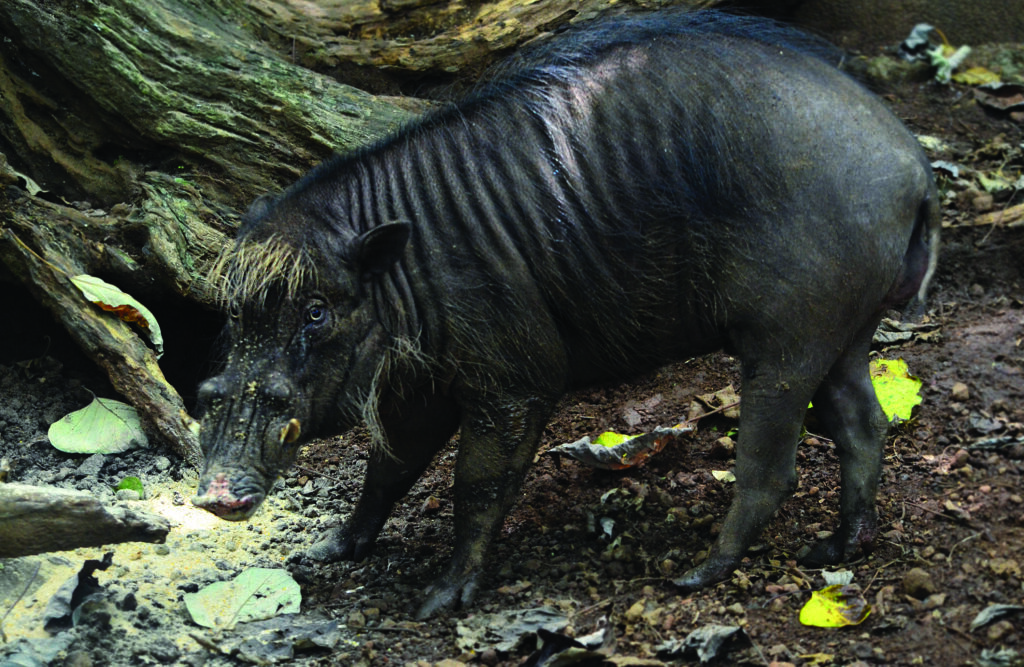
Wild Hog. Classified by the IUCN as Vulnerable, the Philippine Warty Pig (Sus philippensis) is the most widely distributed of the country’s five wild Pig species. Sporting stylish mohawks, nifty bangs, cool beards, and facial warts, the “Baboy Damo” have been pushed deep into the country’s forests due to a combination of hunting, habitat loss, and diseases such as African Swine Fever. (Gregg Yan)
EXPLOSIVE RESPONSE
Farmers illegally set traps for the Pigs, or invite professional hunters to do so.
We met two retired hunters who explained how to track and bring down wild Pigs using “silo” or spring-loaded snare traps and “pong” or Pig bombs, dangerous explosives designed to blow a Pig’s head up.
Their meat is sold for up to Php 700 per kilogram.
HOW OUTBREAKS SPREAD
Another wild Pig killer is African Swine Fever (ASF), a highly-contagious viral disease that kills practically 100% of the Pigs it infects.
Since spreading from China in 2018, it has stunned the global Pig industry, killing as many as 25% of the world’s farmed Pigs.
We interviewed farmers in Leyte’s Barangay Mahawan who attested to seeing dozens of dead “Baboy Ihas” or wild Boar after the bodies of ASF-positive domestic Pigs were dumped near a forest during the early part of the COVID-19 pandemic. Eclipsed by more popular and charismatic animals, our wild Pigs haven’t had it easy.
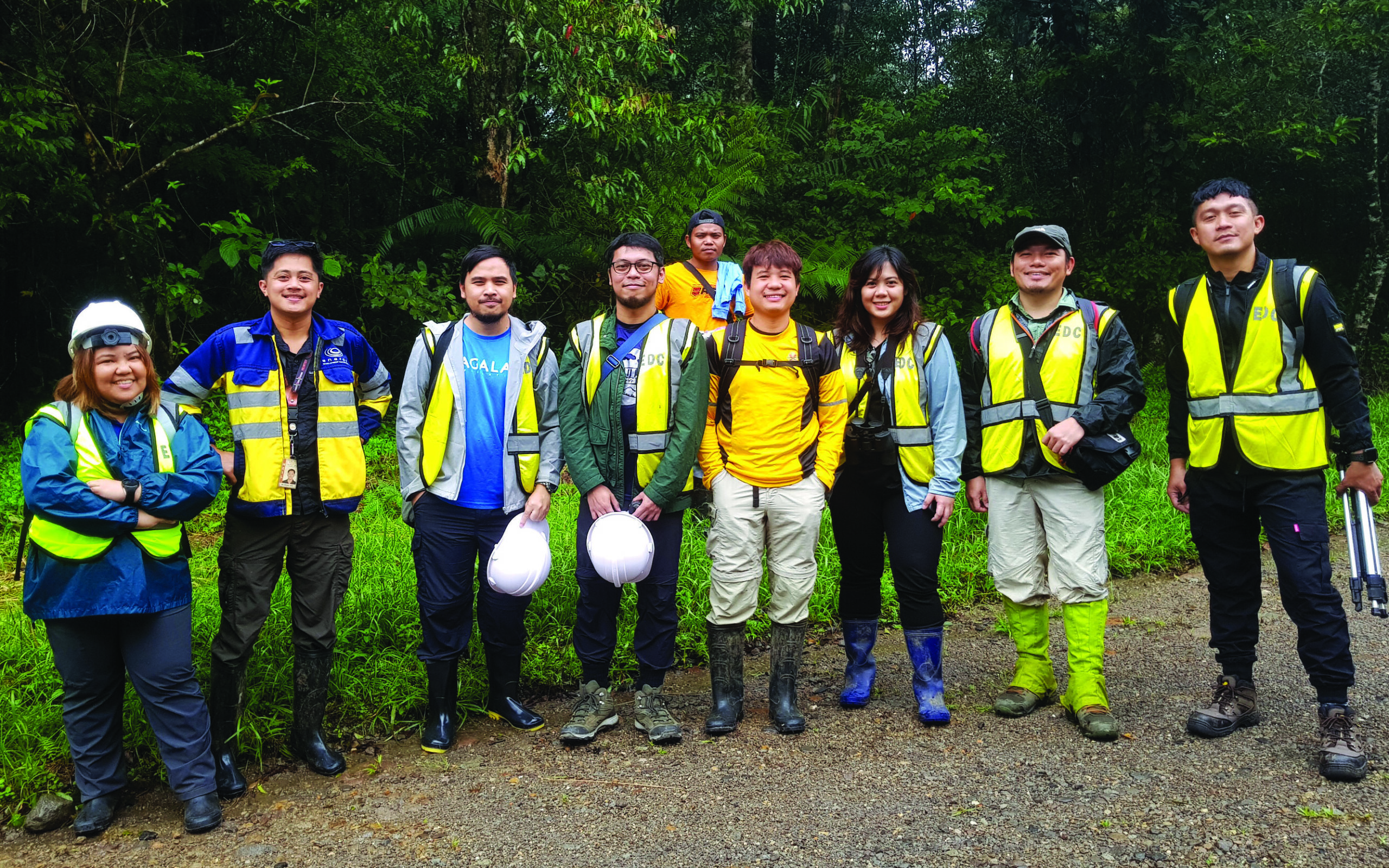
All smiles. Biologists and foresters from the UP-IB and EDC pose for a quick groupie before attaching camera traps to document Philippine Warty Pigs in Leyte. (Energy Development Corporation)
SMELL SPECIALISTS
Wild Pigs generally sport bristly mohawks, stylish beards, facial warts, and highly sensitive snouts. Their sense of smell, for instance, is 2000 times better than ours.
HELPFUL HOGS
Wild Pigs are nowhere near as loved or celebrated as the Tamaraw, Philippine Eagle, or Tarsier, but they might serve a far more useful ecological purpose than merely grazing or predation.
“By snuffling and foraging, wild [P]igs continuously help regenerate forest habitats through soil aeration and seed dispersion,” says DENR Wildlife Resources Division Chief Atty. Theresa Tenazas. “We should change the negative connotation that wild [P]igs are pests to reduce local hunting.”
Always pigging out on roots, fruits, and new shoots, wild Pigs in actuality give new trees a good start by eating their fruits and excreting their seeds all around the forest. Best of all, the seeds are packed in a pungent but potent fertilizer – Pig poop.
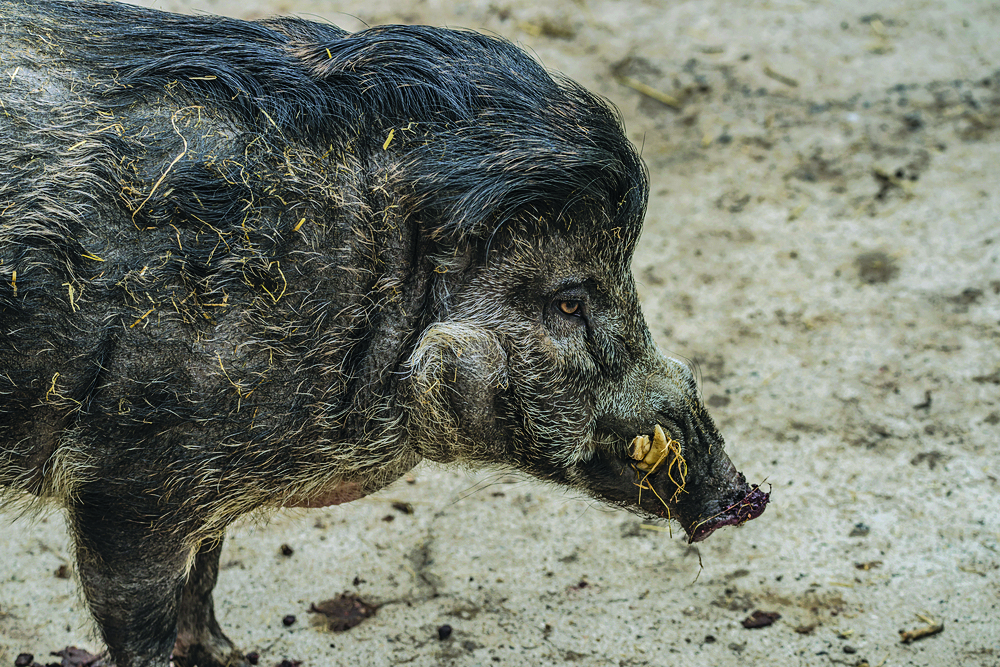
UNDERDOGS — ER, PIGS
The Philippine Warty Pig is just one of nine species under EDC’s Flagship Species Initiative (FSI). Representing iconic wildlife found in its geothermal, solar, and wind sites, EDC’s FSI aims to conserve and protect some of the nation’s lesser-known forest denizens through scientific research and by popularizing them in different sectors of society.
“Our flagship species are indicators of the effectiveness of our forest protection and biodiversity conservation efforts, while serving as icons to mainstream biodiversity conservation and ambassadors of regenerative development,” says EDC Watershed Management Officer, Forester Abegail Gatdula.
The eight other flagship species include the Giant Golden-Crowned Flying Fox (Acerodon jubatus), Visayan Hornbill (Penelopides panini), Apo Myna (Goodfellowia miranda), plus native trees like the Mapilig (Xanthostemon bracteatus), Katmon Bayani (Dillenia megalantha), Red Lauan (Shorea negrosensis), Almaciga (Agathis philippinensis), and Igem- dagat (Podocarpus costalis).

University of the Philippines botanist Abigail
Garrino shows off the large leaves and
prominent yellow flower of Katmon Bayani
(Dillenia megalantha), one of the iconic trees
found in EDC’s Tongonan Geothermal Project
in Leyte. (Abigail Garrino)
WATCHFUL WAITING
As the afternoon rains start rolling in, we finish installing the last of the camera traps. In the coming months, EDC BINHI Foresters shall retrieve the images they capture to ascertain the population of Philippine Warty Pigs at the Tongonan Geothermal Project.
“We look forward to sharing photos of the Philippine Warty Pigs protected in our site,” concludes EDC Watershed Management Officer Forester Ronelmar Aguilar. “We always try to keep poachers and trappers at bay here.”
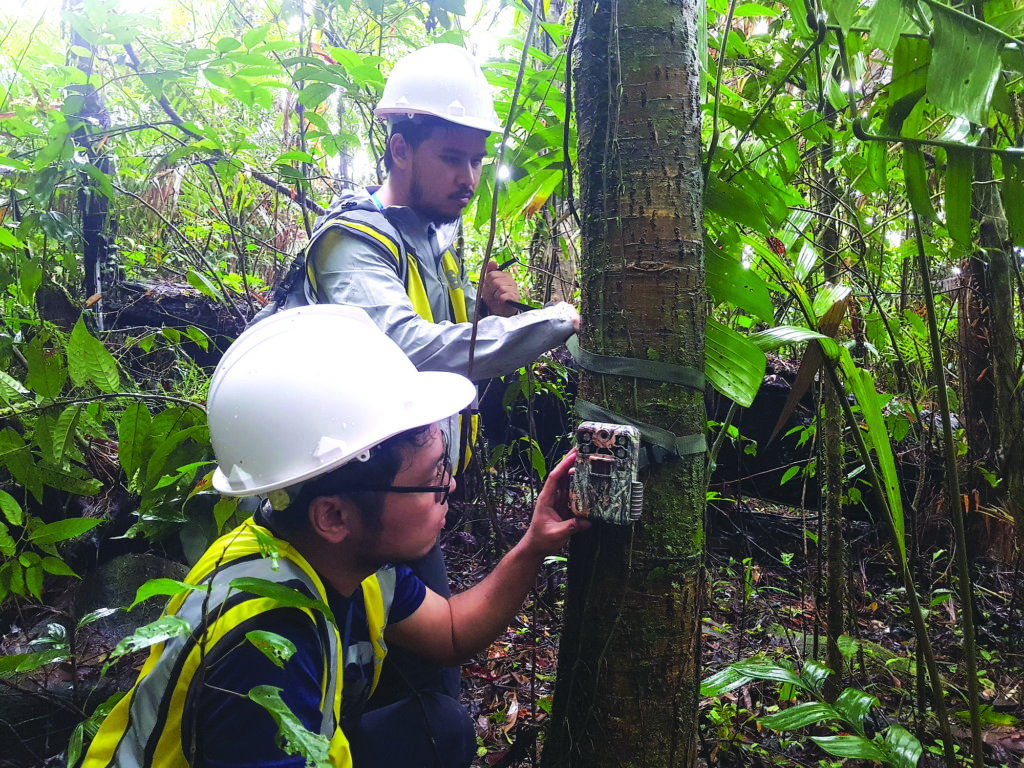
UP-IB field researchers Jay Fidelino (kneeling) and Paulo Miguel
Kim carefully attach a camouflaged trail camera to a tree. The
cameras will snap still images and video segments of the area’s
Philippine Warty Pigs. (Gregg Yan)






